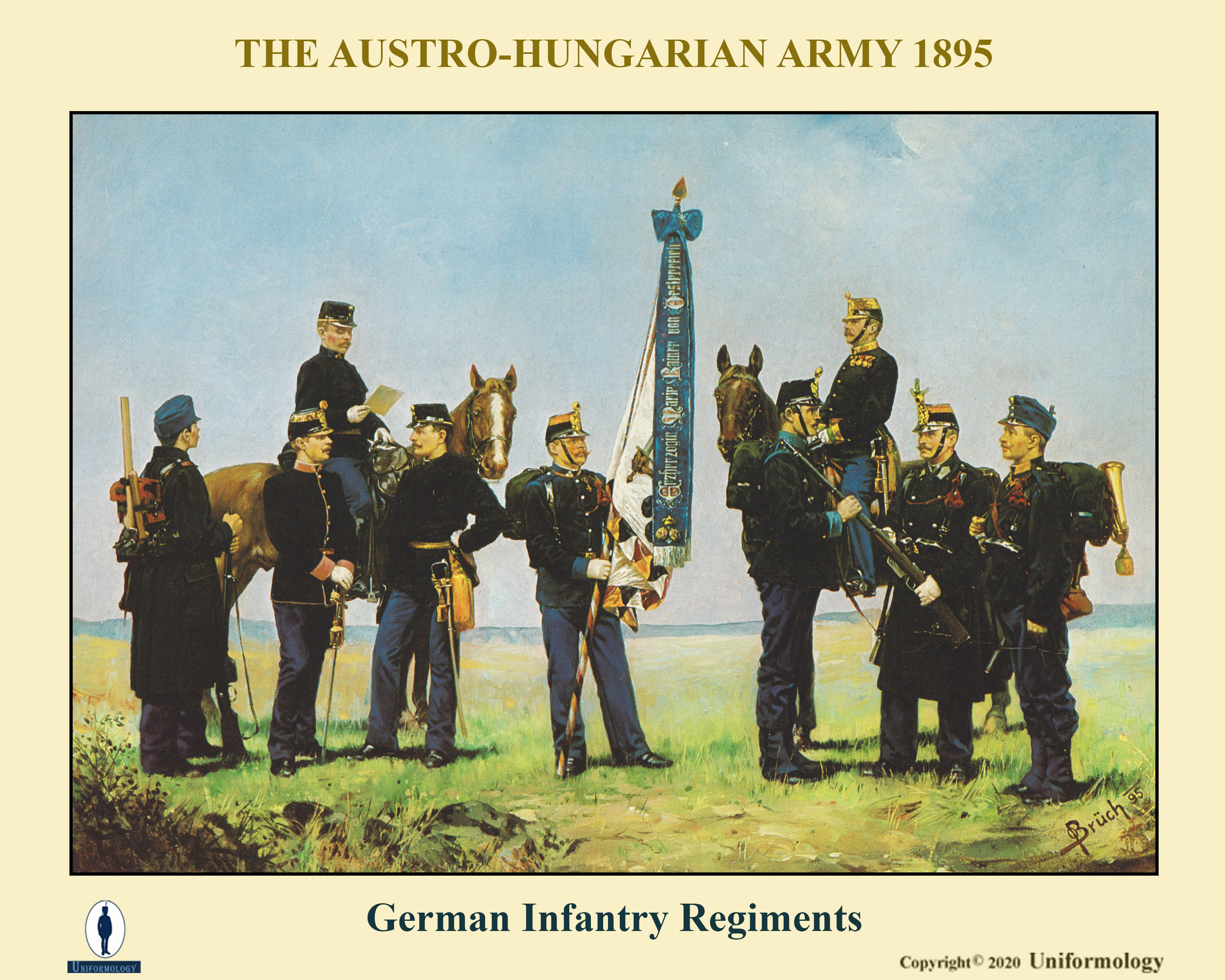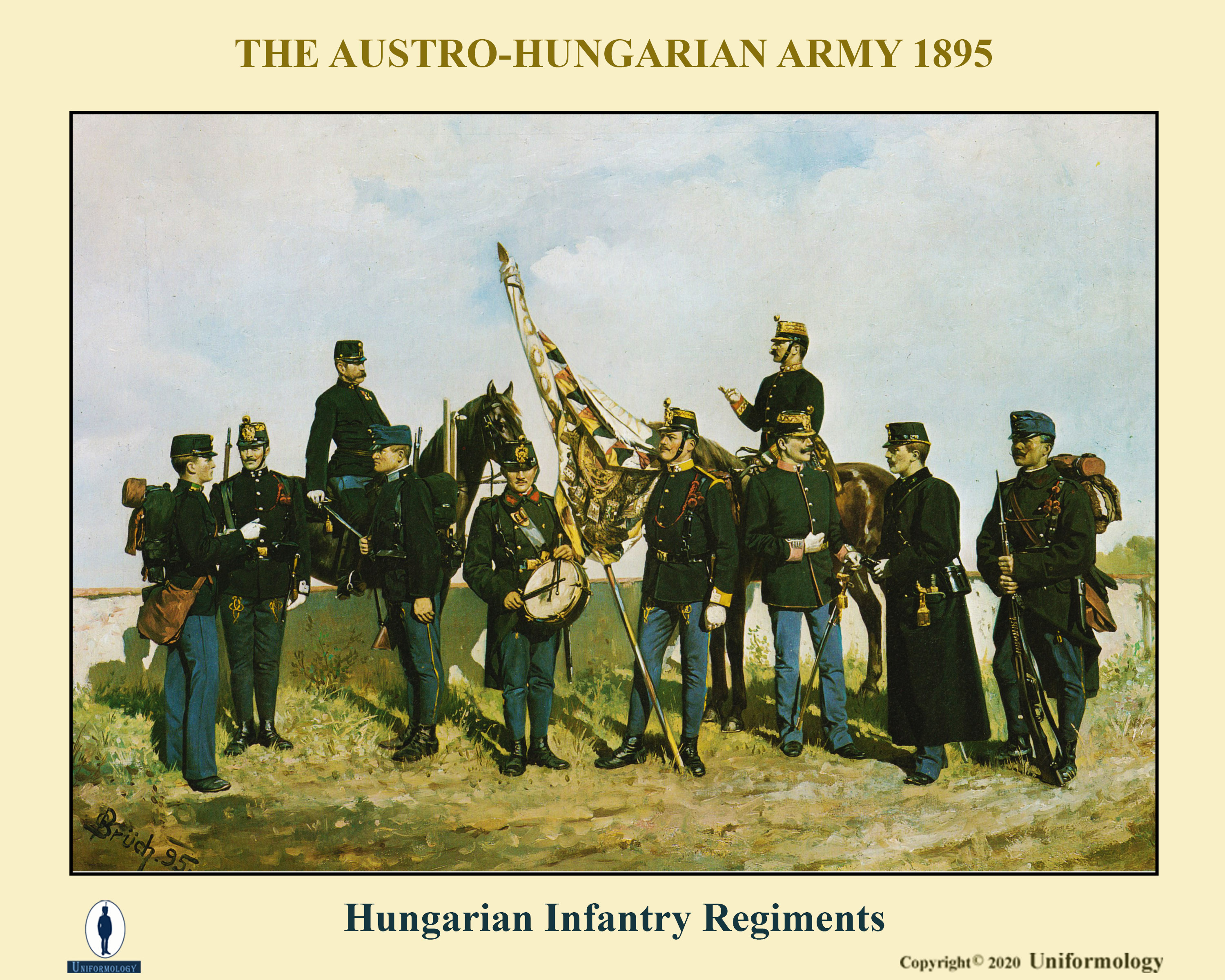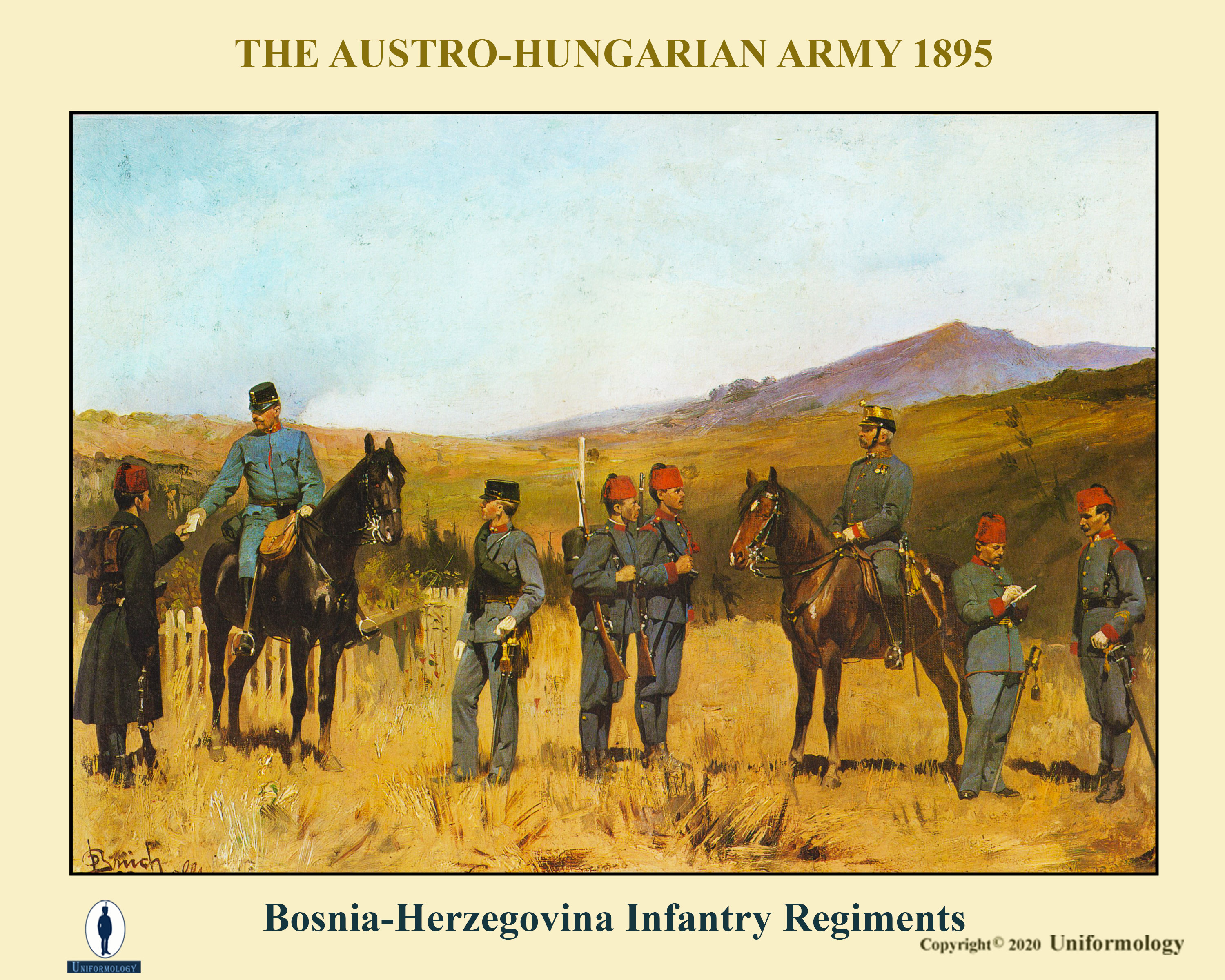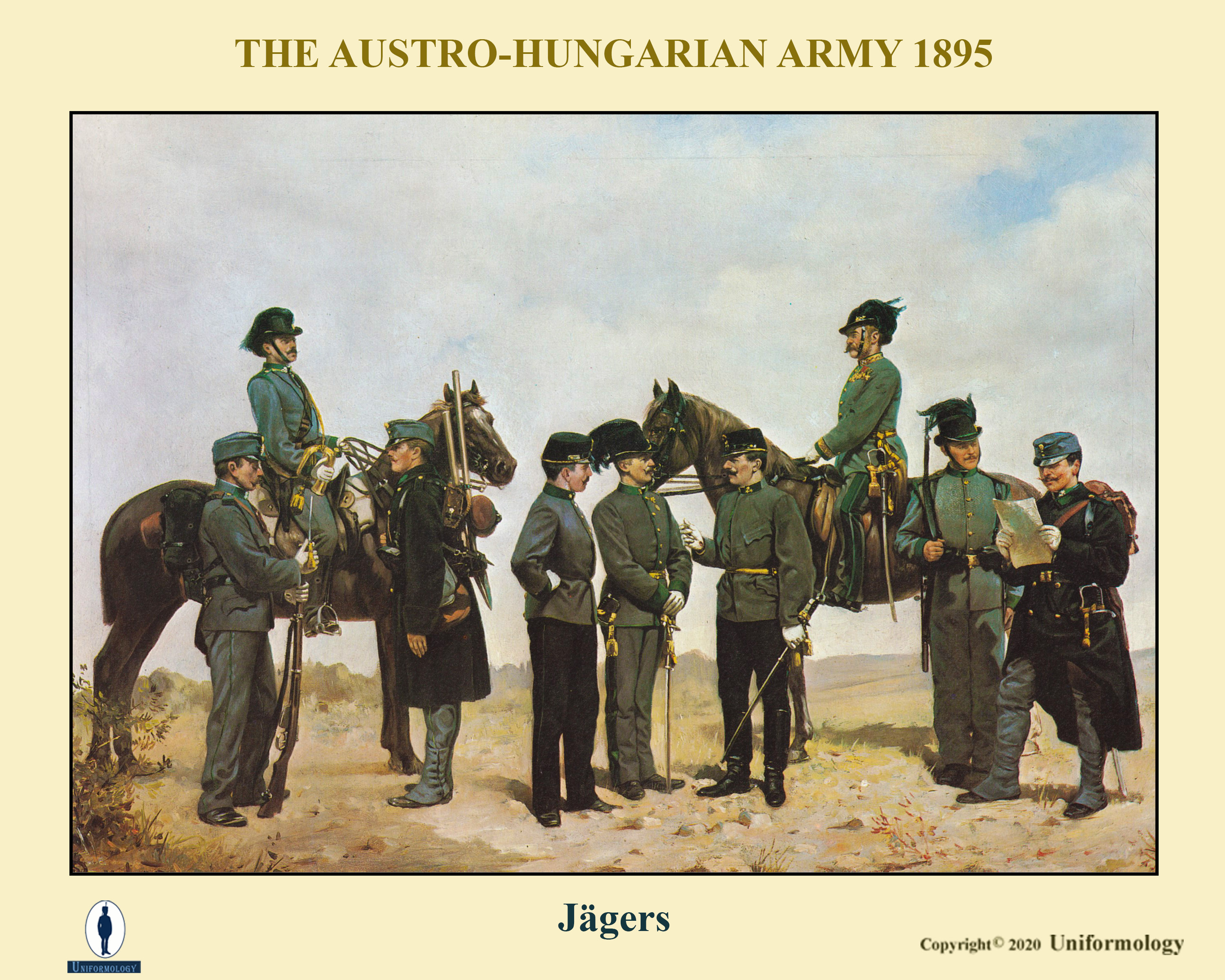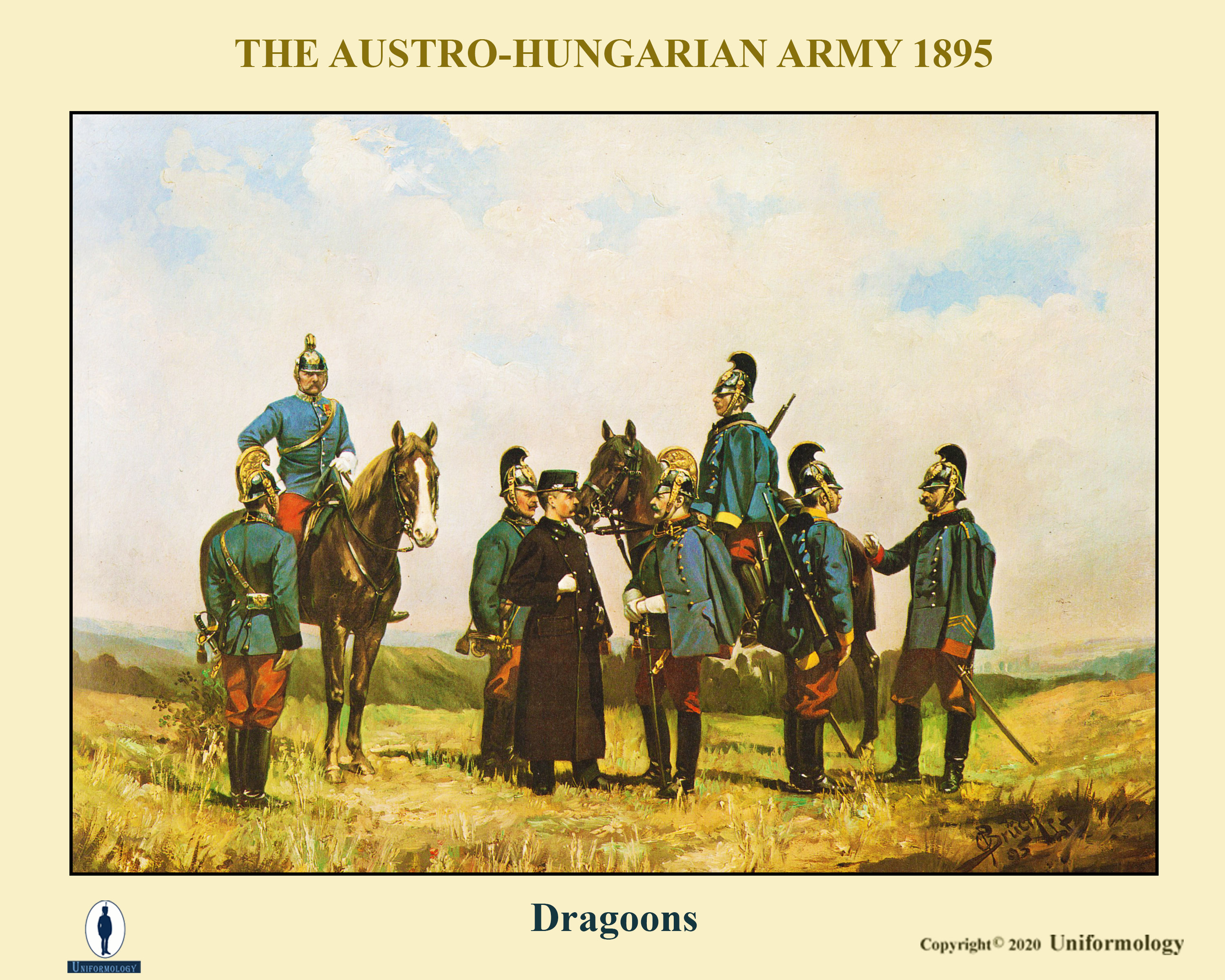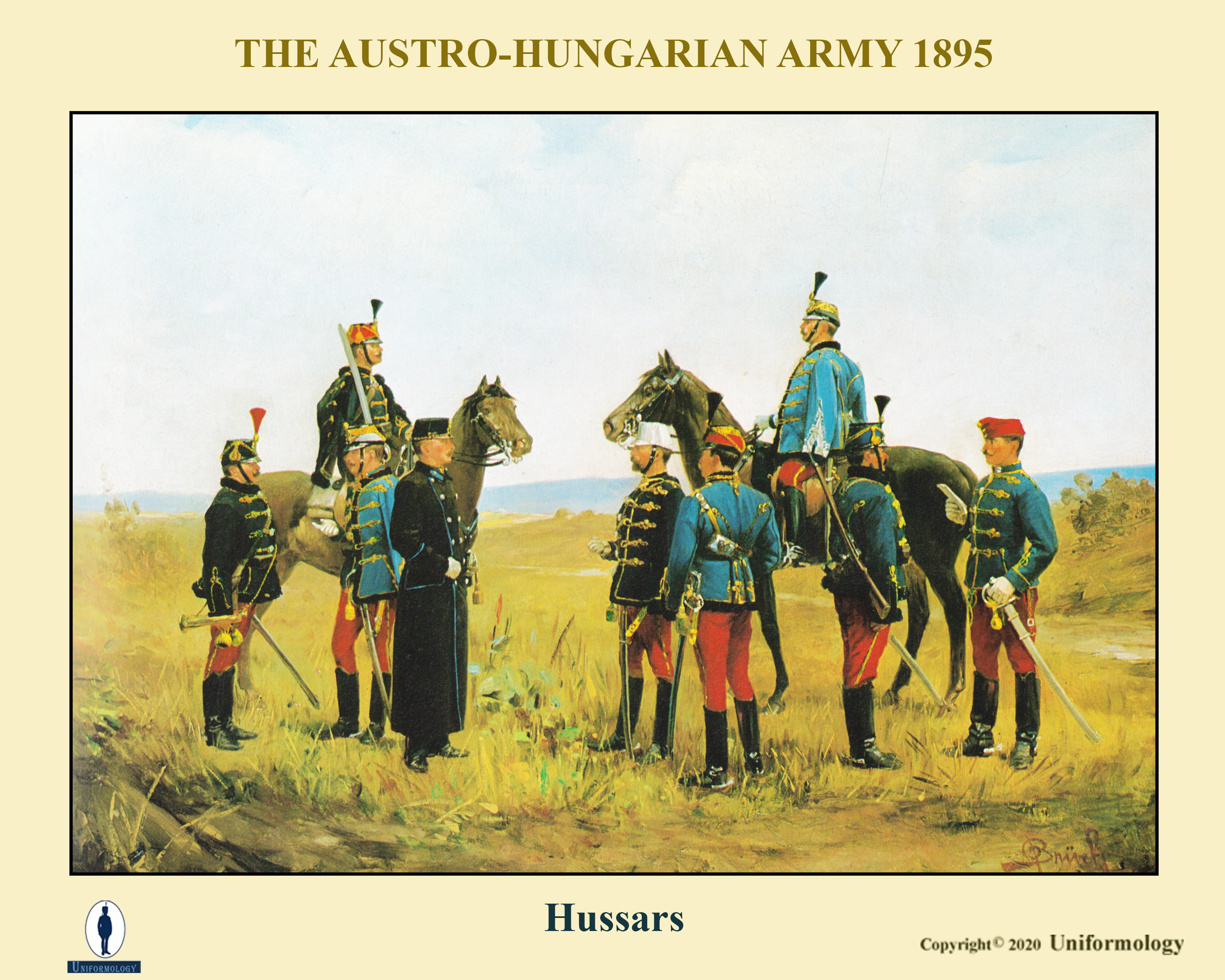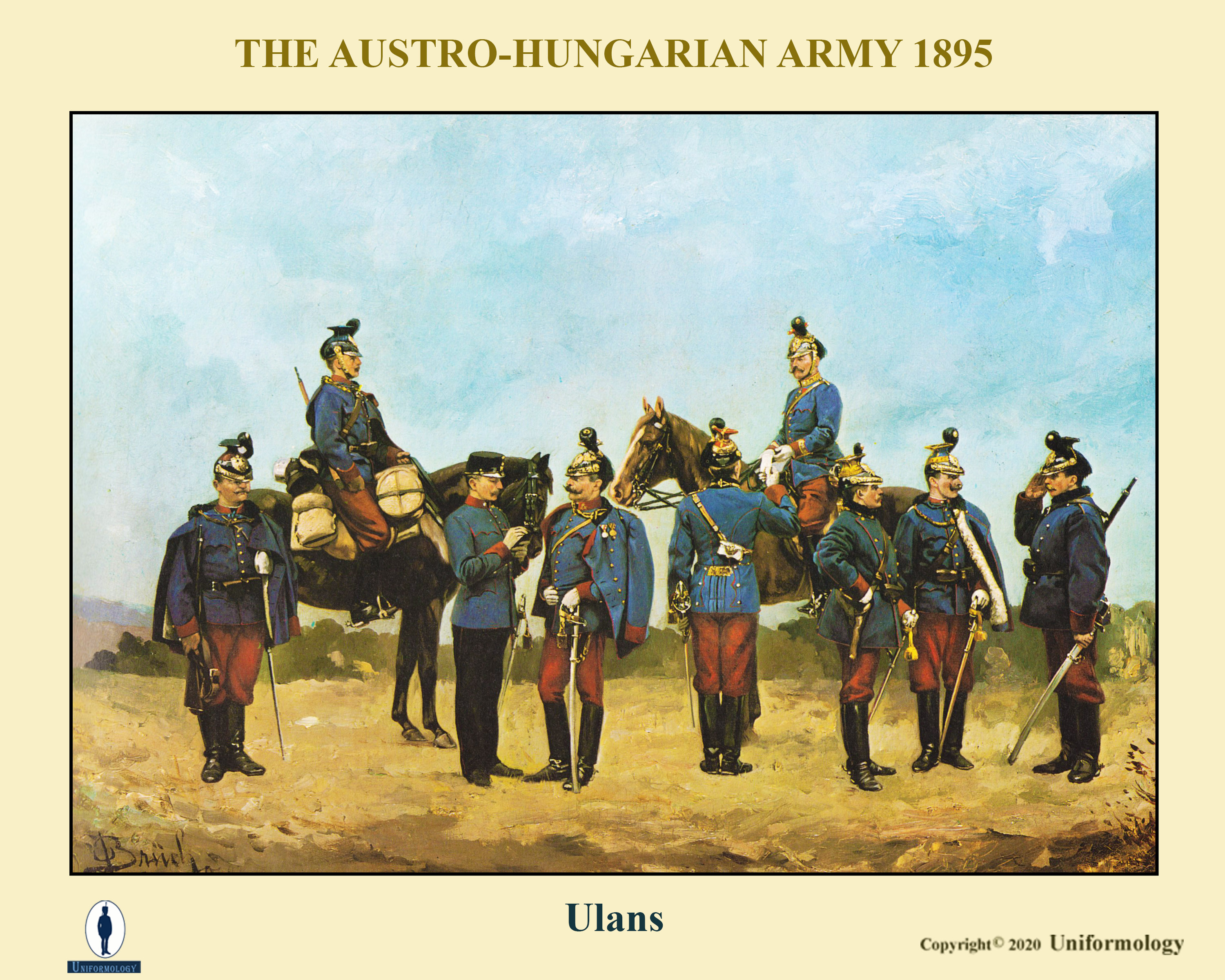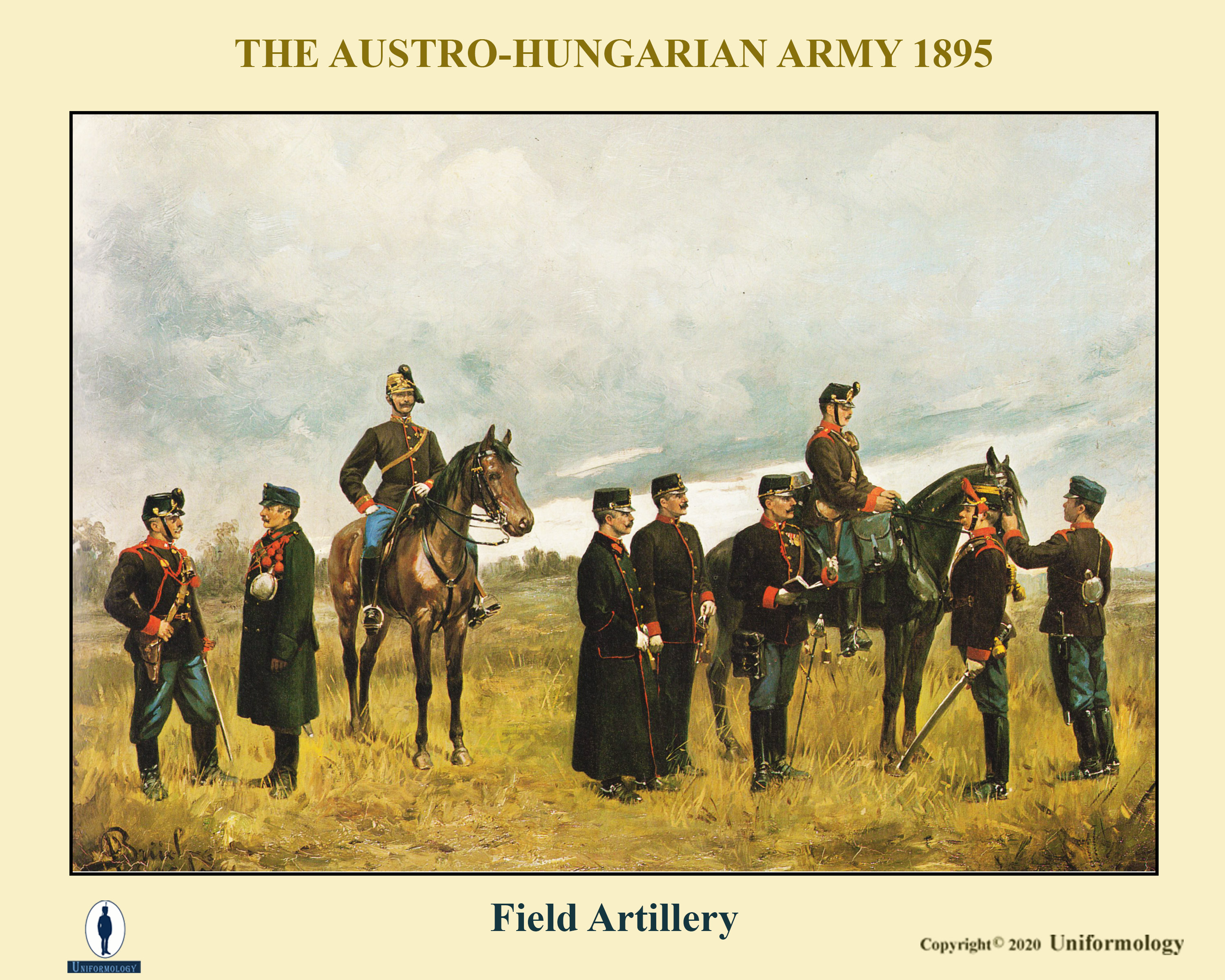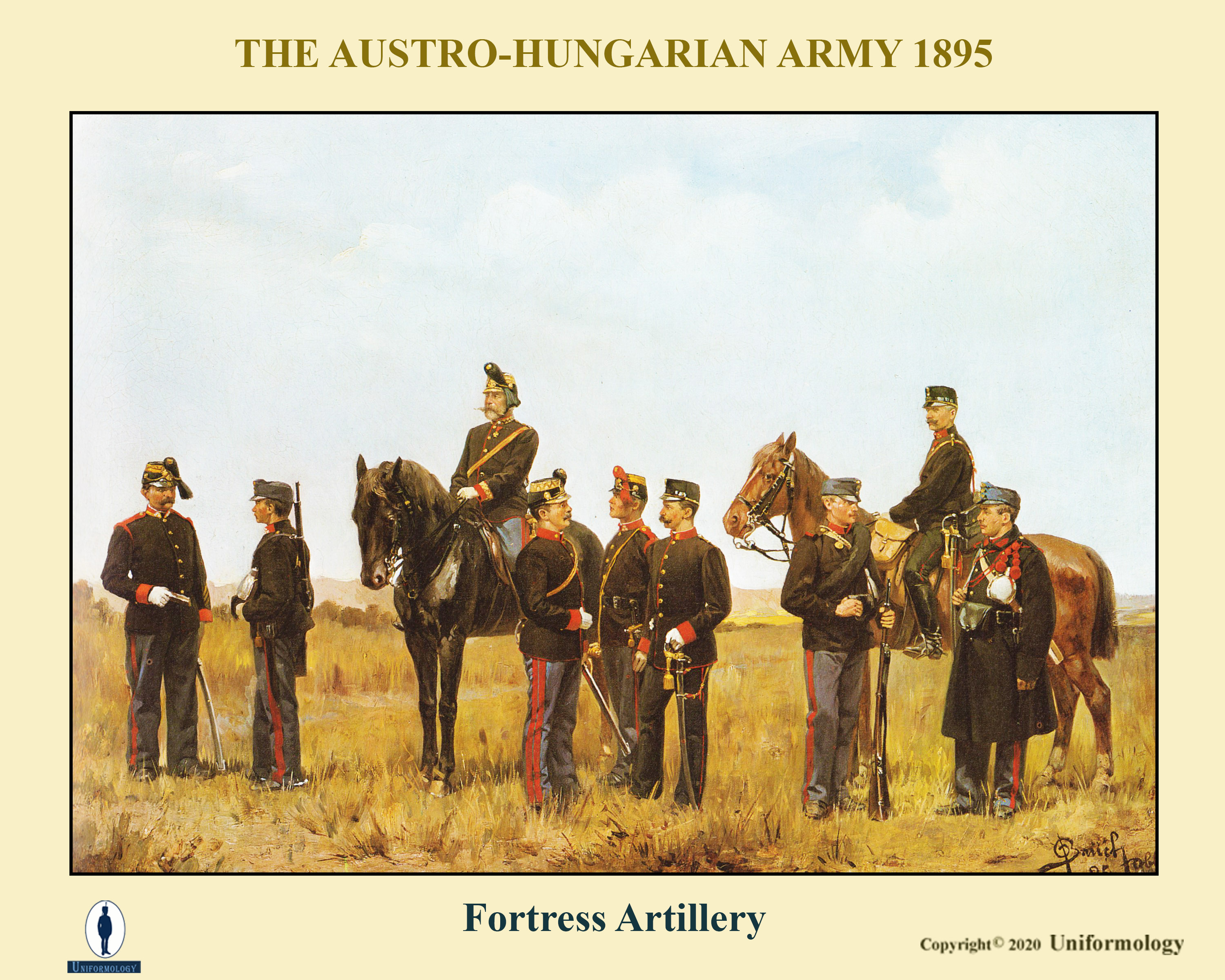THE WORLD OF MILITARY UNIFORMS
1660-1914
THE ROYAL & IMPERIAL AUSTRIAN ARMY
1895
By Oskar Brüch
Page 1
The Royal and Imperial Army of Austria-Hungary 1895
By 1895, the armed forces of the dual monarchy of Austria-Hungary had almost completely recovered from its humilating defeats in the 1866 War. It had grown back up to about 450,000 men in the common (Regular) army and about 300,000 in reserves. However, the spending and resources for the armed forces was far below that of Germany, France and Russia. Despite this, the K.u.K Army was still one of the most formidable in Europe. It comprised of 10 ethnic elements including Germans, Hungarians, Czechs, Poles, Ukrainians, Croats, Serbs, Romanians, Slovaks, Slovenes, Italians.
The Army was administratively top heavy with numerous beaurocratic branches and despite a number of technical branches, they were grossly underfunded.
The uniforms of the army in 1895 had long forgotten the old "White Coats" of pre-1866. The Infantry had adopted dark blue in 1867 but retained the plethora of uniquely coloured facings. The cavalry ( Dragoons, Hussars and Lancers) had taken up a basic combination of light blue tunics and madder red trousers. The only major branch to retain its uniform were the Artillery with brown tunics and light blue trousers. Other branches tended to wear a dark green or pike grey tunics with dark trousers.
With little change, this was the army that went to war in 1914 albeit dressed, for the most part, in a practical pike-grey uniform.
ABOUT THE ARTIST
Oskar Brüch was born in Vienna on 1st July 1869. He was the son of a K.K. Officer. He became an officer himself in 1891, joining Infantry Regiment No. 6. By 1894 he had entered the Military Geographic Institute. In 1895 on promotion to Senior Lieutenant he was attached to the War Ministry and later became an instructor in the Infantry Cadet School in Vienna. He left the army in 1897. For the next ten years he spent tme at the Academyof Art in Münich under professor Wilhelm von Diez (1839-1907). From 1903, he gained a reputaion for portrait work and painted one of Kaiser Franz Joseph.
In 1914 he was appointed as a Colonel in a reserve regiment. From 1915 onwards he painted studies of the army and portraits of Army officers. During this time he executed this series of the army in 1895. His work now hangs in the Heeresgeschlichtlichen Museum in Vienna. He died in Switzerland in 1943.
COMING NEXT
TECHNICAL TROOPS & DEPARTMENTS
---------------------------------------------------------------------

